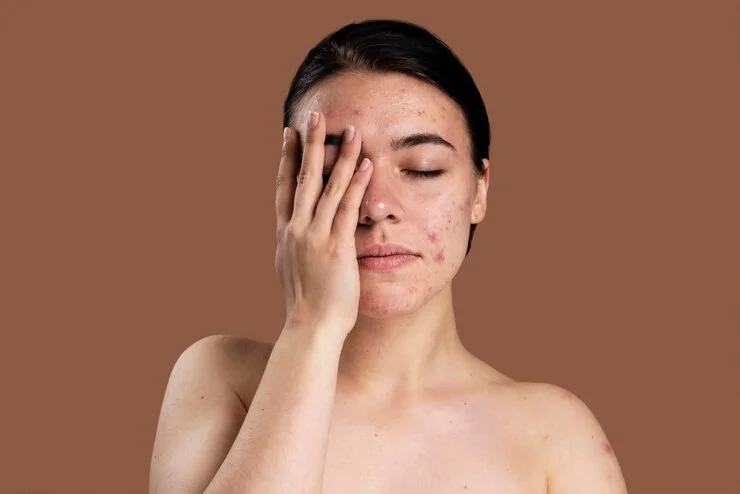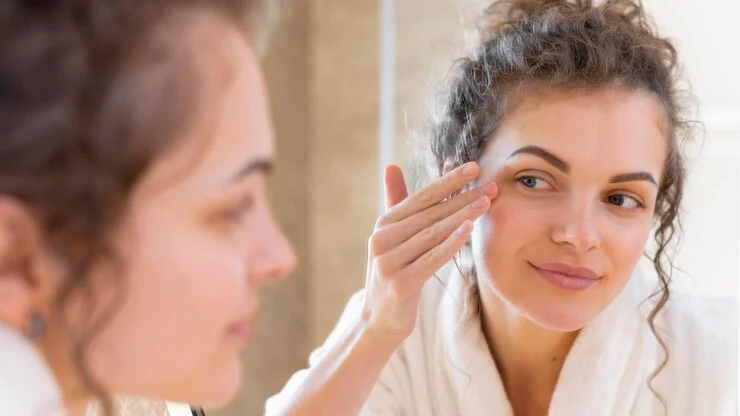How to Remove Spots from Face in 2 Days Naturally
Introduction to Natural Spot Reduction
In the quest for flawless skin, facial spots stand as unwelcome visitors that can detract from our natural beauty and dent our confidence. However, the allure of quick, natural remedies to diminish these imperfections within just 48 hours is both appealing and intriguing. This guide embarks on a journey to explore effective, natural spot-reduction techniques that promise to revitalize your skin, leaving it spotless and radiant.
Understanding the nature of skin spots is crucial. They can arise from a variety of factors including sun exposure, hormonal changes, acne scarring, and even genetic predispositions. While numerous chemical solutions and treatments are available, the focus here is on harnessing the gentle yet potent power of nature. Quick natural remedies, grounded in science, offer a safer alternative, minimizing the risk of adverse effects while promoting skin health.

Understanding Skin Spots
Skin spots, often manifesting as hyperpigmentation, dark spots, or acne scars, are primarily the result of melanin concentration in certain areas of the skin. This can be triggered by excessive sun exposure, hormonal fluctuations, skin injuries, or inflammation. Understanding the underlying cause of your skin spots is a pivotal step towards selecting the most effective natural treatment.
Quick Natural Remedies Overview
This section highlights a curated selection of natural ingredients known for their skin-beneficial properties. From the bleaching power of lemon juice to the anti-inflammatory prowess of turmeric and the healing essence of aloe vera, each ingredient is chosen for its ability to address skin spots effectively and safely.
The Science Behind Quick Natural Spot Reduction

How Natural Ingredients Work on Skin
Natural ingredients often contain active compounds that can influence the skin’s biological processes. For example, citric acid in lemon juice can lighten dark spots by gently exfoliating the skin’s surface and promoting new cell growth.
Importance of Skin Type and Conditions
Recognizing your skin type and any specific conditions is essential. This knowledge enables you to tailor the natural treatments to suit your skin’s unique needs, maximizing effectiveness while minimizing potential irritation.
Preparation Before Starting the Treatment

Assessing Your Skin Type
Before embarking on any skin treatment, it’s crucial to understand your skin type—be it oily, dry, combination, or sensitive. This knowledge dictates which natural ingredients will be most beneficial and which should be used with caution. For instance, lemon juice may be too harsh for sensitive skin types, whereas aloe vera is generally safe for all.
Patch Testing for Allergy Checks
Always perform a patch test before applying any new substance to your face, especially when trying natural remedies. Apply a small amount of the ingredient to your inner forearm and wait 24 hours to observe any adverse reactions. This step is vital to prevent allergic reactions or irritation on your face.
Natural Ingredients and Their Benefits

Lemon Juice and Its Bleaching Effect
Lemon juice is a potent natural bleaching agent due to its high vitamin C content, which helps in reducing dark spots by inhibiting melanin production. However, its acidic nature requires it to be diluted and used sparingly, especially on sensitive skin.
Turmeric’s Anti-Inflammatory Properties
Turmeric contains curcumin, a compound with strong anti-inflammatory and antioxidant properties. It not only reduces the appearance of spots but also prevents new ones from forming. A turmeric mask can brighten the skin and even out skin tone.
Aloe Vera for Skin Healing
Aloe vera is renowned for its soothing and healing properties. It is effective in treating scars, hyperpigmentation, and sunburns, promoting skin regeneration and hydration.
Honey as a Moisturizer and Antibacterial
Honey, especially raw, is a natural moisturizer and antibacterial agent. It can help in healing acne scars and dark spots while keeping the skin hydrated and preventing future breakouts.
Day 1: Morning Routine
Cleansing with a Gentle Natural Cleanser
Start your day with a gentle cleanse using a natural cleanser like honey or diluted apple cider vinegar to remove impurities without stripping the skin of its natural oils.
Application of Lemon and Honey Mask
Prepare a mask by mixing equal parts of lemon juice and honey. Apply to the affected areas or the entire face, avoiding the eye area. Leave on for 15-20 minutes before rinsing with lukewarm water. This mask offers the dual benefits of lemon’s bleaching effect and honey’s moisturizing properties.

Importance of Hydration
Following any treatment, hydrate your skin with a light, natural moisturizer or aloe vera gel. Additionally, drink plenty of water throughout the day to support the skin’s healing process from within.
Day 1: Afternoon Check-In
Refreshing the Skin with Rosewater
Midday, refresh your skin with a spritz of rosewater. Its anti-inflammatory properties can soothe the skin, reduce redness, and maintain the skin’s pH balance.
Quick Turmeric and Yogurt Spot Treatment
Mix a small amount of turmeric powder with yogurt to create a thick paste. Apply this to any stubborn spots for an additional anti-inflammatory and brightening boost. Rinse off after 15-20 minutes.
Day 1: Night Routine
Aloe Vera Application for Overnight Healing
Before bed, apply aloe vera gel to the entire face or specifically on the spots. Its soothing and healing properties will work overnight to reduce inflammation and promote skin repair.
The Role of Sleep in Skin Health
A good night’s sleep is crucial for skin health. During sleep, your body repairs itself from the day’s stressors. Aim for 7-9 hours to allow your skin the time it needs to rejuvenate.
Day 2: Waking Up to Better Skin
Morning Rinse and Observations
Begin your second day with a gentle rinse using lukewarm water to remove any residue from the overnight treatments. Pat your skin dry with a soft towel and observe any changes or improvements in the spots’ appearance. It’s essential to note any reduction in pigmentation or size, as well as to monitor your skin for any signs of irritation or adverse reactions.
Reapplying Lemon Juice Carefully
On the second day, you might opt to carefully reapply lemon juice, but it’s crucial to assess your skin’s tolerance first. If there’s no sign of irritation from the previous application, you can proceed with a diluted lemon juice application. Mix it with an equal part of water to lessen its concentration and apply it directly to the spots using a cotton ball. Leave it on for no more than 10 minutes before rinsing off. This step should be skipped if any sensitivity is noticed.
Day 2: Midday Maintenance
Soothing the Skin with Cucumber Slices
By midday, your skin could use a soothing treatment. Cucumber slices are perfect for this; they’re hydrating and have skin-calming properties. Place chilled cucumber slices over your eyes and any treated areas for about 15 minutes to soothe the skin and reduce any potential puffiness or redness.
Hydrating with Green Tea Mist
Green tea is rich in antioxidants and can help soothe and reduce inflammation. A green tea mist can be made by brewing a strong cup of green tea, letting it cool, and then transferring it to a spray bottle. Mist your face throughout the day to keep your skin hydrated and calm.
Day 2: Wrapping Up the Treatment
Final Turmeric and Honey Mask
In the evening of the second day, it’s time to apply a final mask to consolidate the spot-reduction efforts. A turmeric and honey mask is gentle yet effective for this final application. The anti-inflammatory properties of turmeric combined with the healing and moisturizing benefits of honey can significantly enhance skin clarity and texture. Apply the mask for 20 minutes before rinsing off with lukewarm water.
Preparing for Bed with Aloe Vera
To wrap up the two-day intensive treatment, apply aloe vera gel generously to the treated areas or the entire face. Its healing properties will continue to work on reducing spots as you sleep.
Additional Tips for Spot Reduction
Diet and Hydration
A healthy diet rich in antioxidants and adequate hydration plays a vital role in skin health. Foods rich in vitamins C and E, like citrus fruits and leafy greens, can support the skin’s natural ability to heal and regenerate.
Avoiding Sun Exposure
Protecting your skin from further sun damage is crucial. Always apply a broad-spectrum sunscreen with an SPF of 30 or higher when going outdoors, even on cloudy days.
Maintaining Spotless Skin Post-Treatment
Daily Skin Care Routine
Incorporate gentle cleansing and moisturizing into your daily skincare routine, along with regular exfoliation to remove dead skin cells and promote cell renewal.
Weekly Natural Masks for Maintenance
Continue using natural masks once a week to maintain skin clarity and spot reduction. Alternating between different masks can address various skin needs and prevent irritation.
Common Mistakes to Avoid
Overuse of Lemon Juice
While lemon juice can be effective in spot reduction, its acidic nature can cause irritation if overused. Always dilute it and limit its use to avoid damaging your skin.
Ignoring Skin Type Differences
Not all natural remedies are suitable for every skin type. Pay attention to how your skin reacts to each treatment and adjust accordingly.
When to See a Dermatologist
If your spots significantly worsen or show no improvement despite natural treatments, it may be time to seek professional advice. Dermatologists can offer targeted treatments and advice tailored to your specific skin concerns.
Success Stories: Before and After
Real-life testimonials from individuals who have successfully reduced facial spots using natural remedies can be incredibly motivating. Sharing before and after photos, along with personal stories, can inspire others to try these gentle, effective methods.
FAQs
- Can I really see spot reduction on my face in just 2 days?
- While individual results may vary, many people report noticeable improvements in spot appearance after following natural treatment methods for 2 days. Success depends on the type of spots, skin type, and consistency in following the outlined regimen.
- Is lemon juice safe for all skin types?
- Lemon juice is acidic and can be harsh on sensitive skin. It’s recommended to dilute it with water and perform a patch test before use. People with sensitive or dry skin should use it cautiously or consider gentler alternatives.
- How often should I apply natural masks for spot reduction?
- For intensive spot reduction, natural masks can be applied once daily as part of the 2-day regimen. Afterward, to maintain skin health and clarity, applying a natural mask once a week is sufficient.
- Can natural remedies replace my current skincare routine?
- Natural remedies are effective for spot reduction and can complement your skincare routine. However, they should not entirely replace products that are specifically formulated for your skin type and concerns unless they meet all your skin’s needs.
- What should I do if my skin reacts badly to a natural remedy?
- If you experience irritation or an adverse reaction to any natural remedy, discontinue its use immediately and rinse your skin with water. For persistent irritation or allergic reactions, consult a dermatologist. Always perform a patch test before trying new treatments on your face.
Conclusion
Embarking on a natural journey to spot reduction can be both rewarding and challenging. While significant improvement can be seen in as little as two days with diligent care and the right natural ingredients, maintaining spotless skin requires ongoing effort and a commitment to healthy skin practices. Encourage readers to embrace their skin care journey with patience and optimism, and remind them of the power of natural remedies in achieving radiant, healthy skin.
Resources for Further Reading
For those eager to dive deeper into natural skin care, recommend books and websites focused on holistic beauty and dermatology. Providing a list of resources can empower readers to continue their education on natural skin health and find further support for their skin concerns.







